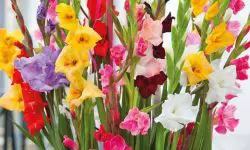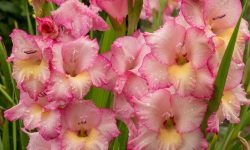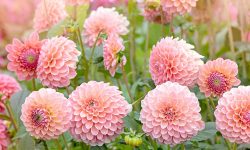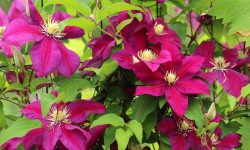Bee balm, also known by its botanical name Monarda, is a standout perennial in pollinator gardens. With its vibrant, shaggy flowers and minty-scented foliage, this plant attracts bees, butterflies, and hummingbirds in droves. While bee balm is relatively low-maintenance, gardeners who want to enhance its flowering potential and keep their garden looking fresh should learn the technique of deadheading. Done properly, deadheading not only encourages a longer blooming season but also contributes to a fuller, healthier plant structure.
Understanding how and when to deadhead bee balm can make a noticeable difference in your garden’s aesthetics. Faded flowers not only look unsightly, but they also signal the plant to divert energy toward seed production. By removing those spent blooms, you redirect the plant’s energy into creating new growth and additional flowers. This process is especially useful during the summer months when bee balm can produce multiple waves of blooms if well-maintained.
In this detailed guide, you’ll discover why deadheading is essential, when to do it, and how to do it correctly to maximize the beauty and vigor of your bee balm plants. Whether you’re growing wild bergamot, scarlet bee balm, or one of the many hybrid varieties, this knowledge will help you cultivate a more vibrant and extended display of blooms.
The Role of Deadheading in Bee Balm Health
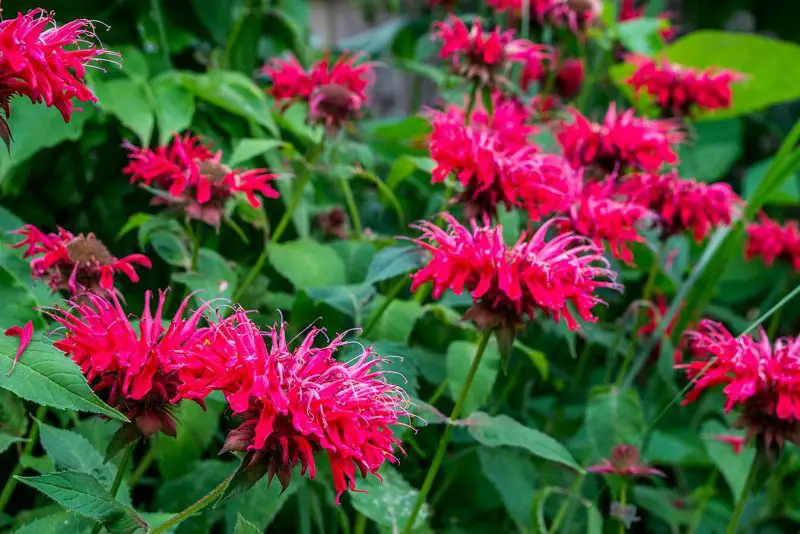
Deadheading plays a vital role in supporting the overall health of your bee balm. As with many flowering perennials, bee balm blooms heavily during early to mid-summer, producing vibrant tubular flowers atop square stems. Once these flowers begin to fade, the plant naturally begins shifting its energy from producing new blooms to developing seeds. This change marks the start of the plant’s reproductive cycle, which, while necessary in nature, is not ideal for gardeners seeking long-lasting floral displays.
By cutting away the spent flower heads before seeds mature, you interrupt this reproductive process and encourage the plant to reallocate energy back into new stem and flower production. This redirection of energy helps the plant maintain vigor and increases the number of potential flower spikes. It also improves air circulation by removing old, cluttered growth, reducing the risk of common fungal diseases like powdery mildew, which often afflicts bee balm in humid conditions.
Moreover, deadheading fosters a cleaner, more organized appearance. Spent blooms can brown and droop, giving even healthy plants a tired look. Removing them reveals fresh green growth underneath and promotes the emergence of new buds. Over time, this practice strengthens the plant, increases its flower output, and prevents premature dieback of stems that might otherwise focus on seed development.
When to Begin Deadheading Bee Balm
The ideal time to begin deadheading bee balm is as soon as the first set of flowers starts to fade. In most temperate climates, bee balm begins blooming in early summer, typically around June or July. Depending on your zone and the specific cultivar, flowering can continue into August or even September if conditions remain favorable.
You’ll know a flower is ready to be deadheaded when the petals begin to wilt, fade in color, or fall away. Often, the central cone or base of the flower will remain, turning brown as seeds begin to form. This is the critical moment to act. By removing the flower at this stage, you can prevent the plant from moving into seed-setting mode, keeping it in a continuous growth phase instead.
Throughout the summer, deadheading should become a regular part of your garden maintenance routine. Every few days or once a week, inspect your bee balm plants for flowers that have begun to fade. This attention ensures you catch the flower heads at the right moment and gives the plant ample time to rebound with new blooms. Timely intervention is key to sustaining the energy and momentum of the blooming cycle.
How to Identify the Right Cutting Point
Understanding where to make your cuts is essential to successful deadheading. The goal is to remove the spent flower head along with a portion of the stem, making the cut just above the next set of healthy leaves or a new emerging bud. This location allows the plant to regenerate from a strong node and promotes branching from a viable point.
Each bee balm stem typically produces a flower cluster at its tip. Below this flower head, you’ll often find leaf pairs or smaller side shoots forming. These side shoots are where future flower buds may develop. By cutting just above them, you stimulate growth from that point, effectively encouraging a new flowering branch to replace the one removed.
It’s important to avoid cutting too close to the flower head or too low on the stem. Cutting too high may leave behind an unattractive stub that doesn’t generate new growth. Cutting too low removes potential bud sites and wastes the plant’s energy. Striking the right balance ensures continued flowering and supports the structural integrity of the plant.
Choosing the Right Tools for Precision and Plant Safety
Using the right tools for deadheading is critical for making clean, healthy cuts that allow the plant to heal quickly. A pair of sharp bypass pruners is ideal for cutting through bee balm’s square, herbaceous stems. These pruners make precise, clean cuts without crushing the plant tissue, which helps prevent the entry of pathogens and reduces healing time.
Garden scissors can be used for smaller, younger stems, especially if the plant is still in its early blooming phase. For larger clumps or thicker stems, pruners offer better leverage and control. Always sanitize your tools before and after use with rubbing alcohol or a mild bleach solution to prevent the spread of diseases between plants.
Wearing gloves can provide added comfort and protection, especially when working with mature bee balm plants that may have stiff stems or be surrounded by dense foliage. Gloves also help you avoid skin irritation, especially if you’re sensitive to the essential oils found in the mint family, of which bee balm is a part.
Encouraging Bushier Growth Through Deadheading
One of the often-overlooked benefits of deadheading bee balm is its ability to promote bushier, denser plant growth. Every time you remove a faded flower head, the plant redirects energy into lateral development, causing new shoots to form along the stem. These shoots often carry their own buds, setting the stage for a second or even third wave of flowering.
This response is most visible when you deadhead consistently over a period of weeks. Instead of growing tall and leggy with only a few flower heads, the plant remains more compact and filled out, with flowers distributed across more stems. This fuller structure not only looks more attractive but also reduces the likelihood of stems flopping over under their own weight.
In addition, bushier growth supports improved airflow around the base of the plant. Bee balm is prone to powdery mildew, particularly when airflow is restricted and humidity is high. By promoting a well-branched form, deadheading helps improve circulation and light penetration, lowering the chances of disease development and enhancing overall plant health.
How Deadheading Affects Bloom Longevity
Proper and timely deadheading directly extends the blooming season of bee balm. Left to its own devices, the plant will shift into a reproductive phase shortly after its first major flush of blooms. This natural process results in fewer flowers as the plant focuses on setting and maturing seeds. Once this shift occurs, it’s much harder to coax the plant back into bloom mode without drastic pruning.
When you remove the spent flower heads early, the plant essentially “thinks” that its pollination attempt failed. In response, it produces more buds in an effort to complete its reproductive goal. This instinctive drive leads to successive waves of flowers, especially when combined with other good cultural practices like adequate watering, mulching, and fertilizing.
A prolonged blooming period not only enhances the visual appeal of your garden but also supports pollinators over a longer time frame. Bees, hummingbirds, and butterflies benefit from a consistent source of nectar, making deadheading a win for both aesthetics and the ecosystem.
Seasonal Strategy: When to Stop Deadheading
While deadheading is beneficial throughout most of the growing season, there comes a time when it’s best to stop and allow the plant to complete its natural life cycle. As late summer shifts into early fall, bee balm begins to slow its growth. At this point, allowing the final blooms to fade and set seed can serve several purposes.
First, the plant begins preparing for dormancy, and seed formation becomes a natural part of this process. Allowing seed heads to form helps the plant finish its reproductive cycle, ensuring its long-term survival. In some cases, the seeds may even drop and germinate the following spring, giving you volunteer plants in future seasons.
Second, seed heads can provide food for birds and wildlife during the cooler months. Goldfinches and other seed-eating birds may visit your garden in fall and winter to forage on the dried flower heads. This adds another layer of ecological value to your garden and allows you to support native wildlife even after flowering ends.
Lastly, stopping deadheading in early fall gives you a clear visual cue that the gardening season is winding down. It allows you to shift your focus toward other fall tasks such as mulching, dividing perennials, or preparing the soil for next year. Knowing when to step back ensures that your efforts are aligned with the natural rhythms of your plants.
Combining Deadheading with Other Maintenance Practices
Deadheading works best when integrated into a broader care regimen for your bee balm. While it’s a powerful technique on its own, its effects are enhanced by proper watering, feeding, and pruning throughout the growing season. Consistent moisture, particularly during hot and dry spells, helps support the regrowth that follows each deadheading session.
Feeding your bee balm with a balanced fertilizer after each wave of blooms can also promote fresh flower production. A slow-release organic fertilizer or compost-enriched soil will keep the plant nourished and responsive to deadheading efforts. Too much nitrogen should be avoided, as it can lead to excessive leafy growth at the expense of flowers.
Regular thinning and dividing of mature bee balm clumps every few years also help maintain plant health and vigor. Over time, older clumps can become woody or crowded, reducing flower output. Dividing in early spring or fall revitalizes the plant and makes deadheading even more effective during the next growing season.
FAQs About How to Deadhead Bee Balm
Can I deadhead bee balm with my hands?
Yes, if the stems are soft and the flowers break away easily, you can pinch off spent blooms by hand. However, using pruners or scissors offers more control and cleaner cuts.
How often should I deadhead bee balm?
You should inspect your plants weekly during the blooming season and deadhead as soon as flowers begin to fade. Regular removal leads to continuous blooms and fuller growth.
Will bee balm rebloom after deadheading?
Yes, if you deadhead promptly and the plant is otherwise healthy, bee balm often produces a second or third wave of blooms during the summer.
Should I deadhead in the fall?
It’s best to stop deadheading in early fall to allow the plant to go to seed naturally, support wildlife, and prepare for dormancy.
Does deadheading help with powdery mildew?
Indirectly, yes. By promoting bushier, more open growth through deadheading, you improve airflow around the plant and reduce the humidity that encourages powdery mildew.

